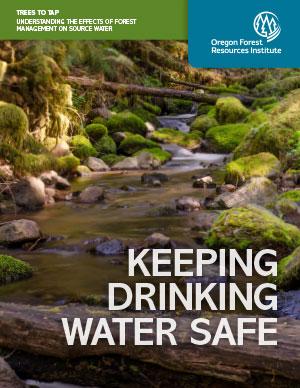Keeping Drinking Water Safe
In Oregon, more than 300 public water providers rely on surface water from rivers, lakes or reservoirs as their main source to supply about 75 percent of Oregonians with their safe drinking water. Nearly half the state is forested, so much of Oregon’s surface water comes from forested watersheds.
Oregon State University (OSU) Institute of Natural Resources spent two years leading a science-based review of the effects of forest management on drinking water. Their final report, Trees to Tap, engaged a diverse team of six OSU scientists, a steering committee of representatives from 11 different organizations, and input from dozens of community water system managers via a statewide survey. The report will be published in hard copy by OSU Extension in fall 2020.
This special report is a summary of the findings from the larger Trees to Tap report.

